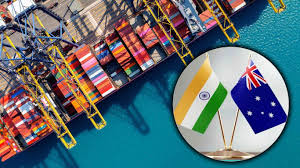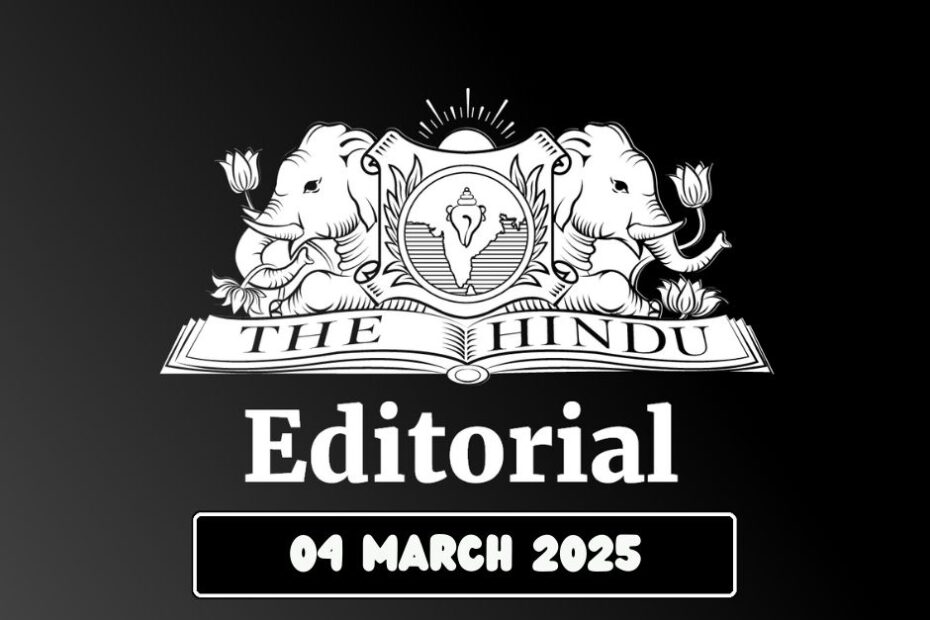| Topic: GS2 – International Relations – Bilateral Relations |
| Context |
|
Australia’s Strong Belief in India’s Growth
- Australia sees India as a rising economic power and expects it to become the third-largest economy by 2030.
- It supports India’s demand for a permanent seat on the United Nations Security Council.
- Australia believes it is a natural partner for India’s growth due to complementary economies and strong strategic ties.
The New Roadmap for Economic Engagement
- A new plan has been launched to strengthen economic ties between India and Australia.
- The roadmap outlines how Australia can contribute to and benefit from India’s economic expansion.
- It builds on the success of the 2018 economic strategy and reflects significant changes in global trade.
Impact of the Free Trade Agreement
- The Economic Cooperation and Trade Agreement (ECTA) has helped trade between India and Australia grow significantly.
- India’s exports to the world increased by 35% in five years, while exports to Australia grew by 66%, showing a strong trade relationship.
Australia’s Contribution to India’s Growth

- Australia supplies India with energy, critical minerals, and resources necessary for its economic and industrial growth.
- It also supports India’s skill development initiatives to train millions of professionals every year.
Key Sectors for Future Collaboration
- The roadmap focuses on four major sectors called “Superhighways of Growth”:
- Clean energy to support India’s transition to sustainable power.
- Education and skills to enhance workforce capabilities.
- Agribusiness to improve food security and trade.
- Tourism to boost people-to-people ties.
- Seven other major economic areas for cooperation include:
- Investment, technology, sports, culture, resources, defense, space, and health.
Support for India’s Manufacturing and Skills Development
- Australia provides essential minerals like lithium, nickel, and cobalt to support India’s electric vehicle industry.
- Australian universities are opening campuses in India to provide high-quality education and training.
The Role of the Indian Diaspora
- Over one million people of Indian origin live in Australia, playing a key role in business and community development.
- The diaspora strengthens India-Australia ties by fostering mutual understanding and trade opportunities.
- Additional investments are being made in programs to enhance cultural and business exchanges.
Strengthening the Economic Partnership
- The roadmap encourages Australian businesses to explore new opportunities in India.
- The next step is to finalize the Comprehensive Economic Cooperation Agreement (CECA) to deepen trade and investment.
- With the roadmap in place, the future of India-Australia economic relations looks promising.
| PYQ: ‘Quadrilateral Security Dialogue (Quad)’ is transforming itself into a trade bloc from a military alliance, in present times – Discuss. (250 words/15m) (UPSC CSE (M) GS-2 2020) |
| Practice Question: How does the India-Australia Economic Roadmap enhance bilateral trade and strategic cooperation? Examine its role in supporting India’s growth ambitions.(150 Words /10 marks) |
2. India’s burden of rising obesity, the hefty cost to pay

| Topic: GS2 – Social Justice – Health |
| Context |
|
Growing Burden of Obesity
- Over the last two decades, India has seen a major shift in health trends, with obesity emerging as a serious challenge.
- According to NFHS-5 (2019-21), one in four men and women in India is obese.
- The prevalence of overweight and obesity varies from 8% to 50% across different states and regions.
- India has one of the highest annual increases in childhood obesity, as per the World Obesity Federation.
- A study by the Indian Council of Medical Research (2023) estimates that:
- 35 crore adults have abdominal obesity.
- 25 crore adults suffer from general obesity.
- 21 crore adults have high blood cholesterol.
| Why This Issue Needs Urgent Attention |
|
Policy and Programmatic Solutions
- Public Awareness and Dialogue
- Obesity should be recognized as a disease that requires prevention and management.
- Public campaigns should educate people on its health risks.
- Promoting Physical Activity
- Better urban planning with bicycle lanes, open gyms, and public parks is necessary.
- Regulating Unhealthy Food Consumption
- HFSS and UPF products should be taxed higher, while healthy foods like fruits and vegetables should receive subsidies.
- Ethical food marketing practices should be encouraged.
- Routine Health Monitoring
- Weight, height, and waist measurements should be a part of all medical check-ups.
- Ideal weight guidelines should be widely shared with the public.
- Use of Anti-Obesity Medicines
- Clinical guidelines should be established to ensure proper use of weight-management medicines.
- Workplace Initiatives
- Offices should provide weighing scales and conduct awareness programs on maintaining a healthy weight.
- Healthy Eating in Schools and Colleges
- Schools should include education on nutrition and provide healthy meals in canteens.
- Best practices from countries with successful school nutrition programs should be studied and implemented.
- Coordinated Government Action
- Multiple ministries, including health, finance, education, and urban development, should work together to combat obesity.
- A restructured nutrition program, “Suposhan Abhiyan,” should focus on mindful eating and proper nutrition.
- Research and Data Collection
- More epidemiological studies are needed to understand obesity trends in India.
- Medical professionals should be trained to address obesity as a health issue.
- Making Healthy Food Affordable
- Healthy food should be made more affordable than junk food.
- Online food delivery platforms should promote healthier meal options.
- Corporate social responsibility funds should be used to promote good eating habits.
Conclusion
- Obesity is a major public health crisis that requires urgent and coordinated action.
- A comprehensive, multi-pronged approach is necessary to promote a healthier India.
- Addressing obesity will not only improve public health but also support economic growth and national development.
| Practice Question: Discuss the rising burden of overweight and obesity in India and suggest a multipronged approach to tackle this growing public health challenge. (250 Words /15 marks) |
3. The way to protect orans
| Topic: GS2 – Social Justice – Vulnerable Sections |
| Context |
|
Supreme Court’s Recognition of Orans
- It issued protectionist orders to conserve orans by formalizing their governance under biodiversity-related laws.
- The aim is to involve local communities in the protection of orans while ensuring their conservation through legal frameworks.
| Orans and Their Importance |
|
Challenges with Formalization
Declaration as Forests Under the Forest (Conservation) Act, 1980
- The Court declared orans as ‘forests’ under the Act, granting them legal protection.
- However, the Act contains exemptions that allow the diversion of forest land for purposes like zoos, safaris, and ecotourism.
- Such exemptions may open orans to commercial use, contradicting conservation efforts and community traditions.
- Many local communities have expressed concerns that this formalization could limit their access to orans.
Designation as Community Reserves Under the Wildlife (Protection) Act, 1972
- The Court suggested designating orans as ‘community reserves,’ which would create a management committee with local and state representation.
- However, this committee is primarily responsible for administrative tasks and does not have decision-making power.
- The ultimate control over the reserves would remain with the state, reducing the authority of informal community institutions.
Common Forest Land Under the Forest Rights Act, 2006
- Another suggestion was to classify orans as ‘common forest land’ under this Act.
- Rights under this Act can only be granted if communities or individuals meet specific eligibility criteria.
- Some informal community institutions that manage orans may not qualify, potentially excluding them from legal protections.
A More Effective Approach
- The Supreme Court recommended that the Environment Ministry develop a comprehensive policy for oran governance.
- Different states currently manage orans through various formal and informal methods, highlighting the need for a unified approach.
- Instead of imposing legal formalization, successful community-led governance models should be identified, supported, and replicated.
- Policies should empower local communities to lead oran conservation efforts, with assistance from the state and civil society.
- Any governance framework must be developed in consultation with local communities to preserve traditional practices while ensuring ecological protection.
| Practice Question: How can the formalization of orans under existing forest and wildlife laws impact traditional community-led conservation efforts? Suggest a balanced approach to their governance. (150 Words /10 marks) |
If you like this Editorial don’t forget to check this – The Student Caught in the Three Language Debate
